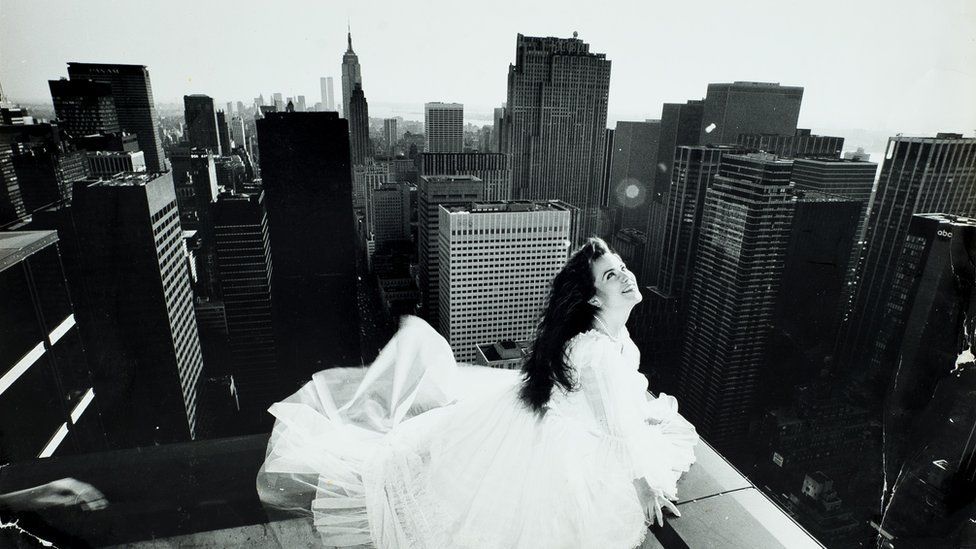Koo Stark on both sides of the lens
- Published

Around 30 years ago while browsing in a book shop in Shepherd's Bush, I picked up a copy of a small book called Contrasts by Koo Stark. It contained around 100 pictures taken by her, from portraits to landscapes, many showing a light-hearted touch.
For the first time in around two decades, a selection of those pictures are on show once more, alongside her photographs of actors and musicians, a few nudes and, of course, pictures of the model and photographer herself.
Koo Stark had an unusual route into the business. A relationship with the Duke of York in the early 80s meant pictures of her were in high demand by the press, with photographers camped out around her home and tailing her every move.
Reasoning that the faces of the photographers were all hidden behind their cameras, perhaps she could do the same thing and take some of that anonymity for herself. Koo Stark decided to pick up a camera and shoot back - arguably the first to make the leap from one side of the camera to the other.
"I thought if I put a camera up to my face they wont be able to tell it is me," says Stark. Though she says there was no way of hiding her long hair.
"I thought it would illustrate the fact that I was an unwilling celebrity. I wasn't posing for the cameras. I was ducking and diving and had a miserable expression on my face."
That decision led to her being offered a book deal for her photographs. She needed a mentor to help guide her, and who better than fashion photographer Norman Parkinson who had photographed Stark before.
"I flew to Tobago and Parkinson taught me how to take pictures," says Stark.
Norman Parkinson behind the camera
"He taught me about light and told me to look at the old masters, starting with Caravaggio.
"Parkinson would then look at my work and initial what he thought was a good image, training me to look for humour."
Parkinson also told Stark that if she was really good she could expect three successful images out of a roll of film - one in 10.
"Funnily you feel that moment on the other end of the camera as well," says Stark, explaining that when working as a model with a photographer you also know when you've got the shot.
"You feel the light catch your eye, you have a real smile too, not a fake one."
Angus McBean and his portrait of Vivien Leigh, 1986
Stark continued her photographic education by studying the greats of photography, including the work of Angus McBean, who she later photographed alongside his portrait of Vivien Leigh, quizzing him about his lighting techniques.
"There was only one portrait that was awkward," says Stark. "It was Eric Clapton singing, and I froze. It was so beautiful, and the audience was just me and my assistant, I felt it was just to me. I couldn't take a picture, I was mesmerised."
Stark's photograph of the Geldof family shows that quirky side to her work.
"Their daughter Fifi Trixibelle was running around and wouldn't be photographed, so Bob held her like this. Yet Paula is just there, hoping for a bit of modesty as she tries to pull the skirt up."
The exhibition, Kintsugi by Koo Stark, can be seen at Leica Mayfair, London, until 26 May 2017.
John Hurt
Oliver Reed
Photograph of Koo Stark in New York is Copyright Norman Parkinson Ltd / Courtesy Norman Parkinson Archive , external